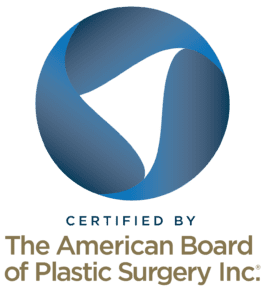
Breast reduction surgery is a surgery with one of the highest approval ratings among patients. One of the most common things we hear women say after having breast reduction is: “I don’t know what took me so long.”
That’s because Houston breast reduction surgery can be a life changing procedure. While some women may desire large, full breasts, others with excessively large breasts may suffer acute challenges related to this body feature — breast reduction signs such as:
- Severe back pain
- Shoulder pain
- Neck pain
- Shoulder grooves (from bra straps cutting into the skin)
- Skin rashes (from bra straps)
- Restricted movement
- Difficulty exercising
- Daily discomfort
- Unwanted attention
- Challenges finding clothes that fit
- Self-conscious about appearance and low self-esteem
- Skin irritation
Fortunately, there is a surgery that can alleviate most or all of these challenges. Breast reduction surgery is a commonly performed cosmetic procedure with minimal downtime and a high rate of success. Here at our practice, breast reduction is one of the most rewarding procedures Dr. Steinberg performs because of the way it enhances and improves our patients’ lives.
What is Breast Reduction Surgery
This “Ultimate Guide to Breast Reduction Surgery” is a comprehensive outline of everything important relating to surgery for women.
We’ll start by going over the basics of breast reduction surgery, including who is a good candidate and how to prepare once you’ve chosen a surgery date for your breast reduction. Then, we’ll take a look at your options regarding techniques and what you can expect on the day of your breast reduction. We’ll outline how to prepare for your breast reduction recovery and what to expect in order to recover safely and achieve optimal results.
Breast Reduction Surgery: The Basics
Reduction mammaplasty (breast reduction) is a procedure that reduces the overall size and volume of the breasts by removing excess tissue, excess fat, and skin. For some breast reduction patients, the size of the areolas may be reduced as well and the nipples moved to a higher position on the chest. A breast lift is often incorporated with the breast reduction as well.
Breast reduction surgery can help women greatly improve their quality of life. Many women who get breast reduction have struggled for years with large breasts that cause them pain and frustration. Breasts of an excessively large size can be a hindrance to everyday activities and may make some women feel uncomfortable in their own skin.
How Does Breast Reduction Surgery Work?
There are several options regarding how breast reduction surgery can be performed. Together, you and Dr. Steinberg will discuss these options, and ultimately, you will need to decide on two core decisions.
First, Dr. Steinberg will need to decide how and where the incisions will be made. Next, there’s the decision of where excess breast tissue will be taken from so as to ultimately reduce the size of your breasts. Dr. Steinberg will also be looking at the best ways to preserve your overall breast sensation, blood flow through the nipples, and lactation capabilities for patients who hope to breastfeed.
Overall, there are two main surgery techniques that may be used with breast reduction. The best technique for you will ultimately depend on your anatomy, the composition of your breasts, how you want your breasts to look after surgery, and Dr. Steinberg’s assessment of the best approach for you.
Vertical Incision Method
When a small reduction and slight lift is desired, the vertical breast reduction surgery incision method is often used. This technique involves making one incision around the areola’s edge and another incision from the bottom of the areola down to the breast crease (where the breast meets the abdomen). This technique is often called a “lollipop reduction” or a “keyhole reduction”.
Wise Pattern Technique
For larger breast reductions involving the removal of more tissue, the Wise pattern technique is often used. This procedure involves making an incision around the areola’s edge, an incision from the bottom of the areola down to the breast crease (where the breast meets the abdomen), and a final incision horizontally along the breast crease at the bottom of the breasts. This technique is typically called the “anchor method” and is very common for certain breast reductions today.
How Will Breast Tissue Be Removed?
How excess breast tissue will be removed from the breasts depends on several factors. In some cases of breast reduction, liposuction can be used alone to remove excess breast tissue although this is generally reserved for surgeries wherein only a small amount of fatty tissue needs to be taken out in order to achieve the breast size that the patient desires. How much breast tissue is removed is decided with your cosmetic surgeon. If a patient has exceedingly large breasts and they are hoping to achieve a more subdued look, then more tissue will most likely be removed.
More often, however, patients desire that a significant amount of tissue and skin be removed from the breasts. In this case, both liposuction and an excising technique must be used to reduce the breast size. Your cosmetic surgeon will remove this excess breast tissue, fat, and skin and will lift the breasts where necessary, ultimately achieving a more youthful, symmetrical and aesthetically pleasing outcome that achieves the breast size desired.
What Happens to the Areolas During Breast Reduction Surgery?
This depends on several factors as well. If the areolas are large and the patient would like to reduce their size, excess skin will be excised from their perimeters. In many cases, the areolas will need to be repositioned as well. That is, they will need to be moved higher up on the chest. This is generally performed with the Wise pattern technique or the “anchor method”.
As the initial incisions are made, your cosmetic surgeon will leave the nipple tethered to its nerve and blood supply. It will then be repositioned higher on the breasts, excess tissue and skin will be removed, the breasts will be lifted and shaped, and the incisions will be closed to complete the breast reduction.
Who Is a Good Candidate for Breast Reduction Surgery?
The best candidates for breast reduction surgery have overly large breasts that are causing physical and emotional challenges. Many women seek this procedure as a way to improve their physical and emotional health — sometimes as a singular procedure or other times as an accompanying procedure to a tummy tuck or as part of a mommy makeover.
Common physical challenges associated with excess breast weight include back, neck, and shoulder pain as well as skin rashes and bra strap discomfort. Many women have trouble exercising, which can make living a healthy lifestyle very difficult. When weight loss or increased muscle toning is desired, overly large breasts can make achieving these goals much more of a challenge.
Emotionally and psychologically, patients with overly large breasts (also known as macromastia) may struggle with self-confidence and overall quality of life issues. Women may have a hard time finding clothes that fit or struggle with unwanted attention and other lifestyle challenges.
Ultimately, the best candidates for breast reduction are those who:
- Are unhappy with the size of their breasts and struggle with many of the challenges listed above
- Are in overall good physical health
- Do not smoke
- Have realistic expectations about your cosmetic surgery
Less than optimal candidates include those who smoke and those with serious health conditions. Dr. Steinberg will evaluate each potential patient on a case by case basis. It’s important to have your medical history ready and to disclose any and all medical conditions or complications you may have.
Patients should also have realistic expectations about the outcome of their breast reduction. Looking at before and after pictures can help orient patients for what to expect concerning breast reduction scars and overall outcomes.
How to Prepare for Surgery
If you interested in breast reduction surgery, this breast reduction guide is a good place to start. Read about the surgery and make a list of questions and concerns. Next, book a consultation appointment with Dr. Steinberg.
While you wait for your appointment, do some research on your ideal breast size and shape. It’s okay to gather pictures or jot down notes about what you would like to see following your breast reduction surgery.
What to Expect at Your Consultation Appointment
At your breast reduction consultation appointment, your cosmetic surgeon will want to discuss your medical history, give you a brief physical examination, and talk to you about what specific breast-related challenges are causing the greatest problems for you.
Once going over you medical history and you are cleared for breast reduction surgery, you and Dr. Steinberg will create a step-by-step plan outlining your best course of breast reduction. This will include what techniques she will use during the procedure, the steps you’ll need to take in preparation for the procedure, and what to expect during recovery.
Breast Reduction Surgery Recovery

In the first few weeks after your breast reduction, it is normal to have some overall discomfort, pain, bruising, and swelling. Patients will have reduced energy and should rest and sleep, drinking plenty of fluids, eating a healthy diet, and caring vigilantly for their incision sites.
Dr. Steinberg provides each of her patients with detailed aftercare instructions, which should be followed closely. Patients will also meet with Dr. Steinberg regularly so that she can check their progress and let them know when they can return to work or school and regular physical activities.
How Long Does It Take to See Results From Surgery?
Because the breasts will be swollen directly after your breast reduction procedure, it won’t be easy to see the results right away. As swelling goes down, patients will be able to see the improvements. It can take 6 months to a year to see your final results.
What Are the Risks of Surgery?
With any serious surgery, there are some risks, complications, and limitations to be aware of. For breast reduction surgery, these include:
- Infection
- Bleeding
- Ongoing swelling and bruising
- Fluid accumulation
- Changes in breast and nipple sensation
- Irregularities in breast contour or shape
- Being unable to breastfeed
- Breast asymmetry
- Undesirable scarring and lasting pigmentation
- Potential loss of breast tissue and skin near incision sites
- Potential loss of nipple/areola
FAQ
Where can I find breast reduction surgery near me?
Dr. Ashley Steinberg performs breast reduction surgery at her practice in Houston at the Clinic for Plastic Surgery. If you live in the Greater Houston area and are interested in breast reduction, call Dr. Steinberg’s office today to book a consultation appointment.
What is the cost of breast reduction surgery?
The cost of your plastic surgery breast reduction will vary depending on the technique that is used and several other factors. Keep in mind that in some cases, health insurance may cover all or some of your breast reduction surgery cost. Be sure to discuss your breast reduction surgery cost with your provider to see if this procedure is covered in your plan.
How big do your breasts have to be for a reduction?
The majority of patients go down one or two bra cup sizes. This means that most any patients with breasts can have this procedure if they want to reduce the size of their breasts. However, health insurance providers often have a specific pre-surgery breast size minimum, which they use to calculate coverage eligibility.
How painful is surgery?
Because general anesthesia will be used, you will not feel any pain during surgery. After you wake from your general anesthesia, it’s normal to experience some discomfort and pain as healing takes place. Your cosmetic surgeon will provide you with several options for reducing this pain. You will have clear instructions about your pain medication and anti inflammatory drugs and how to administer them. As time goes on, the swelling and discomfort will naturally reduce in intensity.
How long does it take to recover from surgery?
This depends on the techniques that were used in surgery, the patient’s overall physical health, and how well the patient follows their recovery care instructions. Generally speaking, patients can expect to be in recovery for anywhere from two to six weeks. During this time it is important to wear your surgical bra and follow the instructions given to you by your surgeon. There are different opinions about wearing a surgical bra after surgery. It is important that you follow the surgical bra instructions that your plastic surgeon gives you closely. Throughout the recovery period after your cosmetic surgery, Dr. Steinberg will evaluate each patient regarding when they can return to work, daily activities, and exercise.
Will I have scars?
Yes, there will be some breast reduction scarring after your surgery. Scarring is an inevitable part of surgeries that require incisions. If you follow Dr. Steinberg’s recovery instructions carefully, however, you can reduce the appearance of any scars.
Does breast reduction surgery decrease the risk of breast cancer?
Breast reduction surgery is a common procedure in plastic and reconstructive surgery. Studies reveal a 28% reduced risk of breast cancer in women who undergo this surgery.
Learn More About Your Options
If you would like to learn more about the breast reduction procedure and your options for cosmetic surgery, contact us today to set up a consultation with Dr. Ashley Steinberg.
Dr. Steinberg specializes in breast reduction surgery and has helped countless clients achieve lasting comfort and confidence with this procedure. Contact us today to see if surgery could be a good fit for you.












